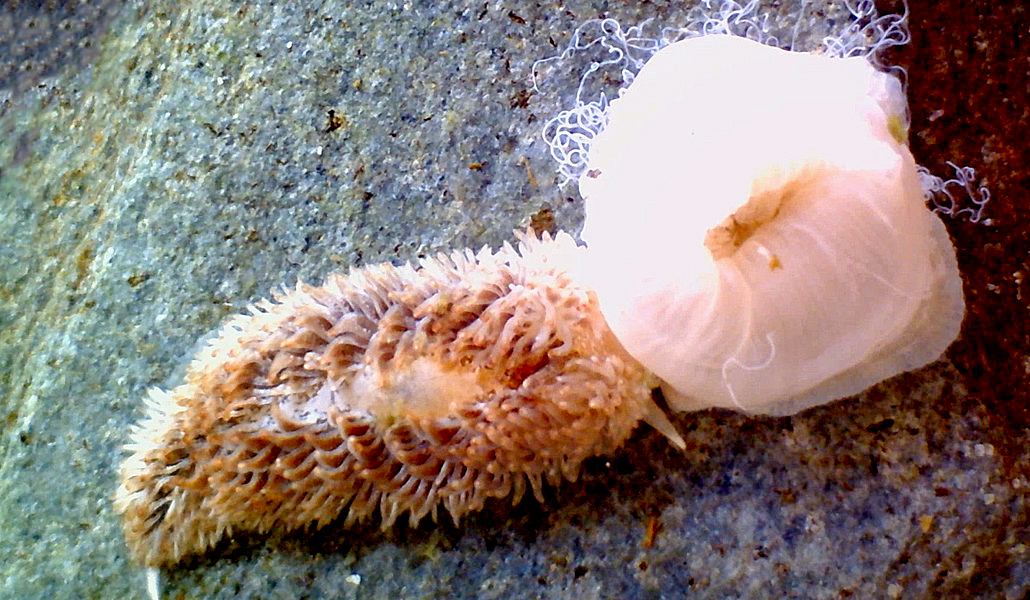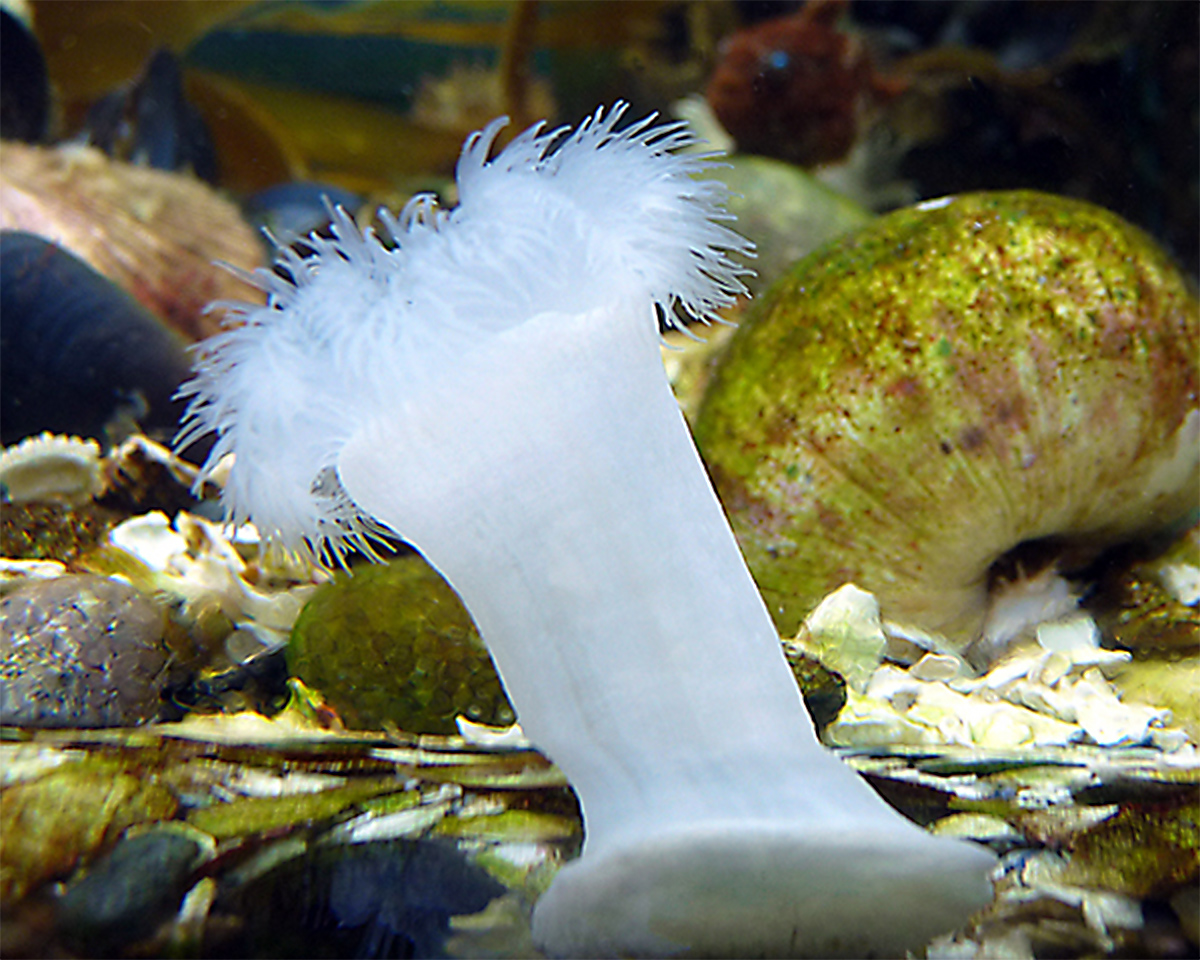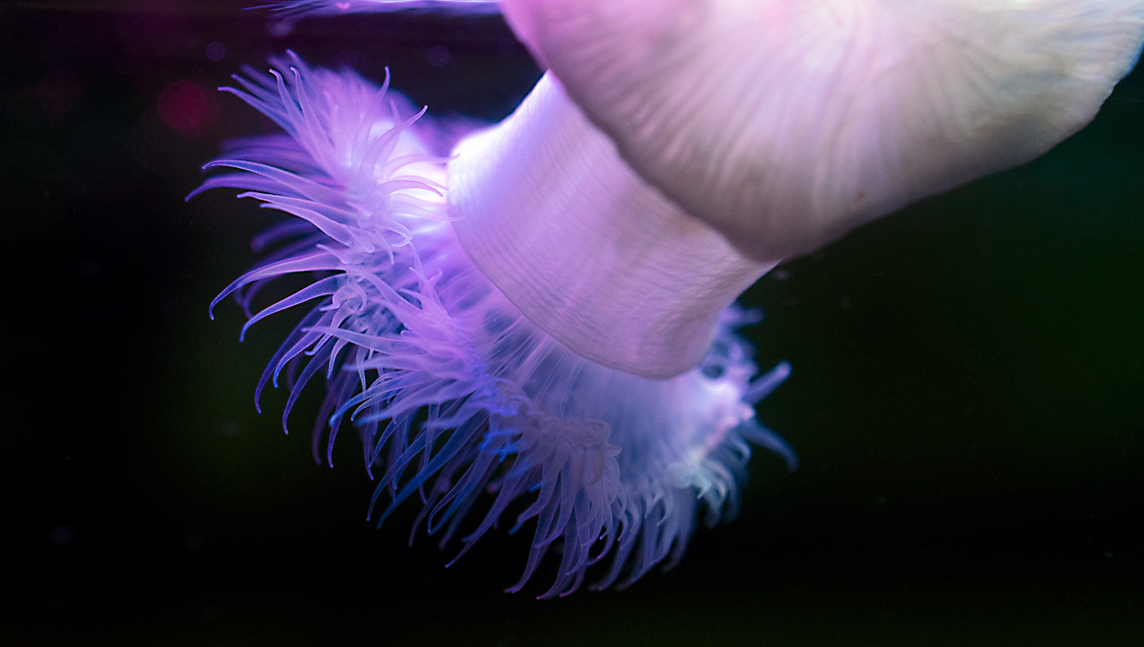Author: Fraser Evans
Common Names: Short Plumose Anemone, Plumose Anemone, Fluffy Anemone, Frilled Anemone
Scientific Name: Metridium senile
Size: Roughly 10cm (4 inches)
Identifying Features: The Plumose Anemone is usually short, from about 2 inches to 4 inches, but can grow larger. They’re commonly white but have a broad range of colours from white, cream, peach, orange, brick-red, and grey. The base is quite large compared to the column and they have numerous transparent tentacles. The body is covered with a mucus which makes them quite slippery when touched.

A Shag Nudibranch (Aeolidia papillosa) feeding on a Short Plumose Anemone (Metridium senile)
Habitat: You can find these critters in North-western Europe as well as on both the east and west coasts of North America. On they west coast of North America they are found from Alaska to California. These beautiful creatures occur from the tidal zone to around 100 metres deep. They are commonly found on the edges of docks as well as on rocky shore lines.
Predators: Not many animals attack the Plumose Anemone but they are eaten by some fish and nudibranchs. In our own aquarium one was being eaten by the Shag-rug Nudibranch (Aeolidia papillosa). The nudibranch was eating the anemone and appeared to be devouring the defensive acontia being released from the anemone’s column.
Food: When small plankton such as jellyfish, zooplankton or other small sea critters float by the anemone will reach out with its tentacles and use it’s stinging nematocyst to subdue the prey before proceeding to eat it.
Reproduction: Metridium can reproduce either sexually or asexually. It reproduces asexually by pulling itself into two parts (binary fission) and each side turns into an individual anemone. They also produce by fragmentation where small pieces of their body can break off and grow into new anemones. They also reproduce sexually by releasing its sperm or eggs into the sea out of its mouth. Then the little fertilized eggs will grow into larvae which metamorphose into baby anemones.
REFERENCES:
Horton, A. (2000). Metridium Senile – Plumose Sea Anemone. British Marine Life Study Society. Retrieved January 10 2010 from Glaucus.org.uk/plumose.htm
Morris, R. and Haderlie, E. (1983). Intertidal Invertebrates of California (690) pp. 62-63 Stanford University Press, Stanford California. Retrieved Jan 11 2010
Plumose Anemone – Metridium Senile. Marine Fauna Gallery of Norway. Retrieved January 12 2010 from Seawater.no/fauna/Nesledyr/nellik.htm
Photograph and video by Fraser Evans


